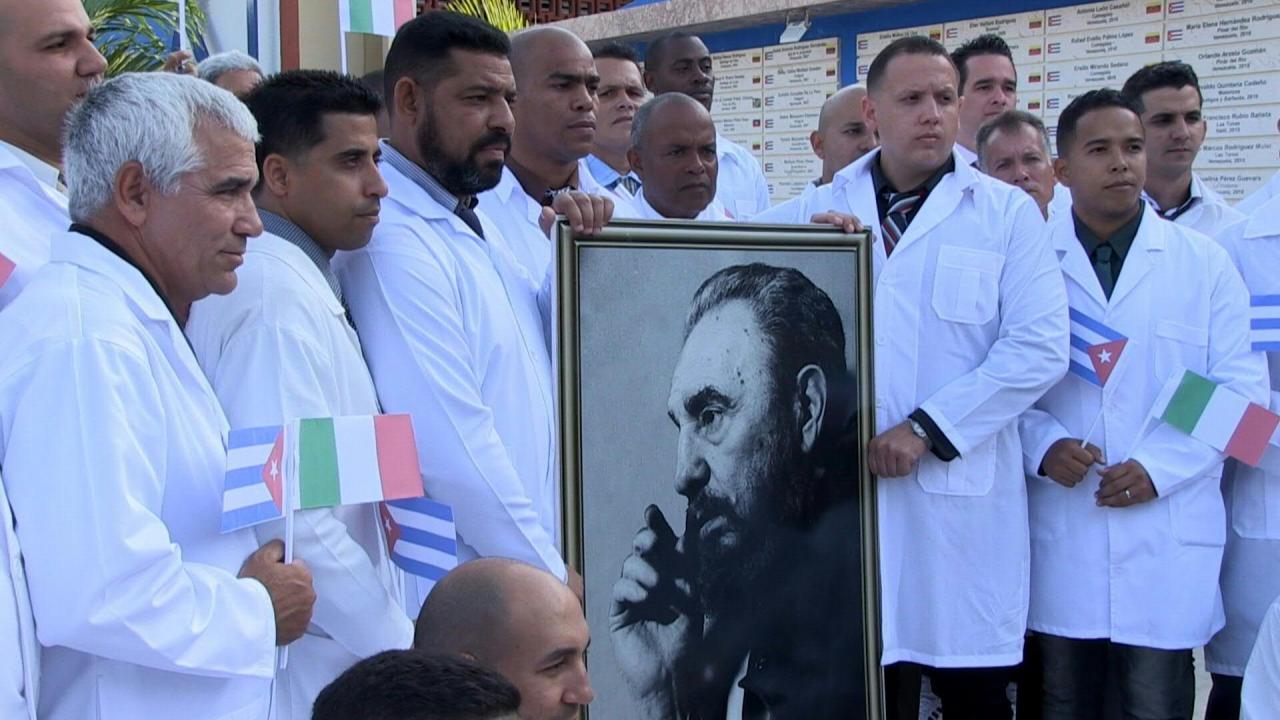The complaint that the Cuban Prisoners Defenders (CPD) organization has just lodged with the UN and the International Criminal Court about the details behind Havana's "medical missions", based on the testimony of 622 Cuban professionals who are members of those brigades, lays bare one of the island's best-kept secrets: how much it pays its collaborators vs how much it pockets.
The CPD report confirms that Cuban workers receive between 9% and 25% of what the host country pays for their work, which applies not only to medical missions, but to almost all of the professionals hired through governmental agreements abroad.
According to CPD, Havana always negotiates lucrative contracts for the doctors it exports. Sometimes these deals are sealed directly with the destination country, but other times they are handled through "tripartite collaboration", by which a rich third country, such as Venezuela, Norway, Portugal or Luxembourg, assumes the financing of the "mission".
In these cases workers always receive as payment what the CPD report describes as "a small, residual fraction of what Cuba bills for them."
Through 405 accounts collected on the subject in the organization's report, it is concluded that the average monthly salary that professionals have received has been between $71 (for those hired in Belize) and $1,089 (for those exported to Saudi Arabia.
This last case, together with Eritrea (1,072); East Timor (984); Jamaica (933); Sierra Leone (855); Brazil (846); Trinidad and Tobago (827); and Qatar (734), are the most lucrative destinations.
Professionals earn salaries based on their specialty and professional status. Therefore, doctors are better paid than technicians. On the lowest rung of this labor exploitation ladder are students who have not yet graduated, who are exported and not paid a salary, but rather only a stipend.
The case of Saudi Arabia
According to the CPD "the Government of Cuba pays an average of $490 to Cuban professionals on 'missions'", while it collects an average of "just over $3,500 for each of them."
"The two most common contract models are the one in which Cuba undertakes to pay the collaborator, as in Brazil; and the other, in which the collaborator collects from the government or local or international institution, and is then forced to hand over a monthly amount (between 75% and 90% of their salary) to the Government of Cuba, as in the case of Saudi Arabia," the investigation clarifies.
In the latter case, the contract signed by the workers on the "mission" with the state-run Comercializadora de Servicios Médicos Cubanos (CSMC SA) clarifies in its Section III that "the Cuban health professional will receive a total monthly payment for services rendered, to be paid by the Saudi party, from which they are to deduct 4,518 SAR for a stipend and living expenses, transferring the rest to the Bank Account of CSMC S.A. indicated."
This payment must be made, it states, "within five business days of the date the monthly payment is received."
It also clarifies that the professional "must deliver, every six months, to the representative designated by the Ministry of Public Health of the Republic of Cuba, the report, salary notice or similar document that the institution that hires him issues. This will make it possible to apply any adjustments to the amount of the wages to be received in the subsequent months, until the presentation of the new document", suggesting that the professionals are obliged to promptly report what they earn, and that the amounts may be modified.
"Failure to present this document will be considered a breach," the contract also indicates.
Other abusive agreements
The contract for Cuban doctors in Uruguay represents a total of $174,000 a year for Havana, which "earns a net amount of $4,500 for each one, while the doctor only receives $1,000. In turn, the cost of a Uruguayan doctor, for his own government, is approximately $3,000," says CPD.
This contract has been condemned as a form of slavery by several Uruguayan politicians, such as Partido Colorado Senator Pedro Bordaberry, the investigation points out.
Other examples are Botswana, whose authorities pay approximately 3,000 euros (just over 3,500 dollars) per month per doctor, while the professionals earn an average of about 700 dollars per month, as stipulated in the agreement between the governments of the two countries.
In the case of Guatemala, the agreement signed in 2012 obliges that country "not to hire, under any modality, doctors or technicians who have abandoned the Cuban Internationalist Medical Mission, in those places where Medical Brigade of Cuba staff are located.
This, which seeks to guarantee that the professionals do not abandon the "mission", is complemented by another section in which the government of the Central American country pledges to "guarantee that the professionals who provide health care activities in Guatemala under this Subsidiary Agreement do so only in the public health sector," and to "not allow any professional to perform health care activities during or after the expiration of the service period covered by this Agreement."
CPD specifies that "although the agreement indicated, in 2012, a stipend of 7,000 quetzals (about $900)," doctors who worked in Guatemala at that time said "that they always received less than 2,000 quetzals (257 dollars), around 25%, since they had to return the money to Cuban officials every month. "
In Algeria each doctor is exported for a sum of $6,700 per month, as indicated in the agreement between the parties. "The reports that CPD has collected on the mission in this country indicate that the fixed amount in hand was 450 dollars a month," says the report.
In Ecuador, Quito paid Comercializadora de Servicios Médicos Cubanos directly, according to the agreement signed in 2012, almost 123,000 dollars per year, most of which was retained by the company. Havana paid each professional, according to reports in the local press, around $340 a month.
